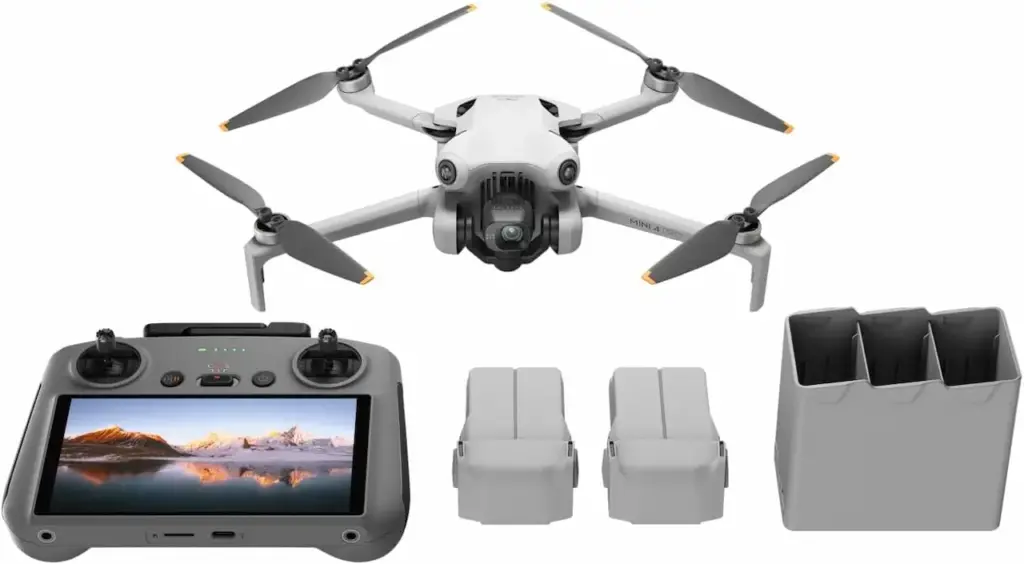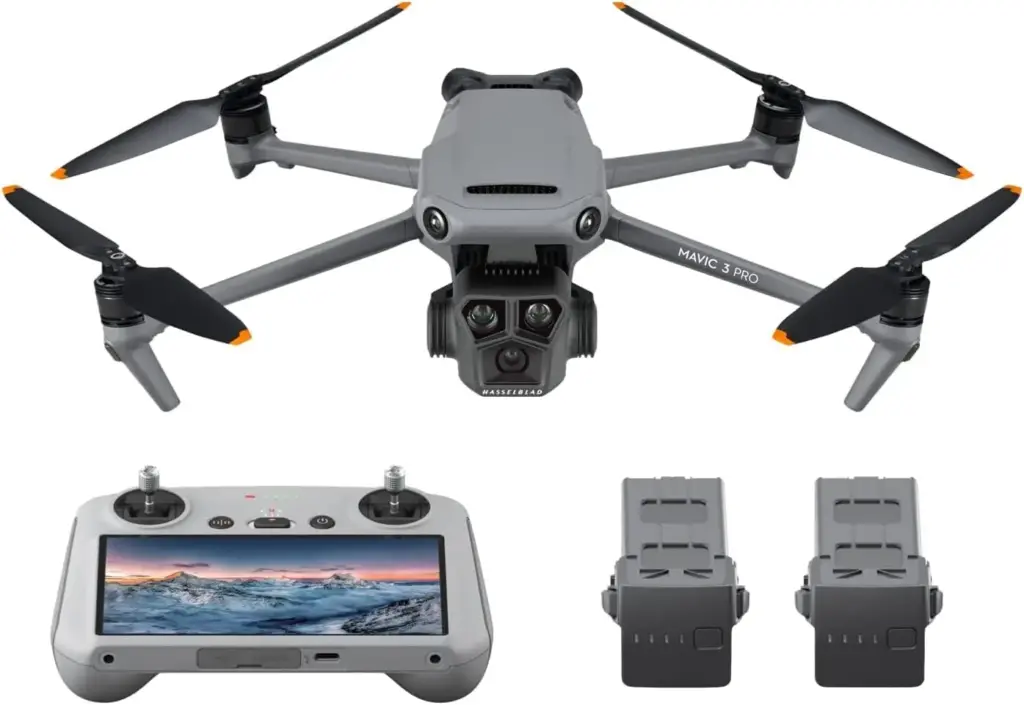How To Use Drones For Roof Inspections To Save Time
Andrew J Kobza is the CEO of Professional Drone Solutions. They use drones to inspect roofs. Kobza has seen his business grow to the point where he has inspected over 500 roofs in the last three years.
Drones are a great asset to the roofing industry. It is difficult to find a roofer today who has not at least tried drones. Drones are a great way to save time when inspecting roofs. They can save up to an hour for each roof.
A drone pilot might ask “Why even bother trying to sell roof inspections?” Roofers will take your lunch, right? But there are other ways to get into the drone inspection business.
- Working with the homeowner directly:Homeowners will want to see their own photos of the roofer’s work and have them on hand in case of a dispute.
- Working as a general contractor, or developer. Contractors that hire roofers want aerial views of their clients’ progress. They also use them for warranty disputes and to provide information.
- Working as an Insurance Adjuster:Insurance adjusters need drone data in order to document roof conditions.
How can a drone pilot ensure that they are able to continue to earn a high income despite the many opportunities ahead?
Drone roof inspections can produce data of high quality and competitive value if they are used in four specific ways.
- Learn how to identify roof problems.
- Avoid legal problems: Document any issues, but don’t say that they are a problem unless you know the pilot well enough to be able to assess it.
- Do not miss out on a place.
- The right gear is essential.
Use drones to detect roof problems
Pilots should be able to identify what they are looking for when inspecting aircraft. Consider all the possible problems that can arise with the roof envelope. Here are some things to look out for:
- Fascia missing or damaged
- Curling shingles
- Cracked or missing roof shingles
- Cracked tiles
- Roof dents and bowing
- Gutters that are broken or missing
- Ridge caps missing or damaged
- Broken or missing vent
- Damaged flashings
- Missing shingles
- Damaged chimney
- Excessive debris, dirt, or garbage left
- Not Specified Grout Joints
- Incorrect Lapping of Tiles or Shingles
- Hips that are not properly detailed
- Wavy valleys
- Unstraight Ridge Caps
You’re not sure what the hip is on a roof? Where is the dog who laps up tiles? It can sometimes be as simple as searching for yourself in Google. Do some research on an industry-specific website, such as FRSA. Learn the language. Study. You will fall in love with the idea that you can stare at tiles for hours.
Use drones to inspect roofs without getting into legal trouble
It is important to know the terminology, but a pilot must avoid one thing: giving advice or opinions. Advice or opinions that result in litigation or lawsuits can be a risk for any pilot.
How can you avoid getting in trouble by presenting the facts? Do not say anything about which you are unsure. You can say, “It looks the same as the other roofs I’ve seen.” If you are not qualified to comment on the roof, however, it is a good response if the client asks. I don’t remember seeing any obvious cracked or suspicious areas.”
Take note of the words: obvious, recall, apparent, suspect. These words clearly indicate that you have little knowledge about roofing and are giving a non-conclusive answer.
Even experts use apparent words, as the defense can’t point to the notes of the expert and claim you had an agenda when you entered the case. Your credibility will not be questioned if the mold is actually mildew, algae, or dirt. You cannot give a definitive opinion without any facts, even if you’ve seen roofing problems worth over $100 million dollars in homes.
When a pilot says, “there appeared to have been a crack in the tile of the fireplace” instead of “there was a tile cracked on the chimney”, their credibility is not affected when the crack turns out to actually be a needle. Smart pilots will develop a relationship and defer to an expert when they need to.
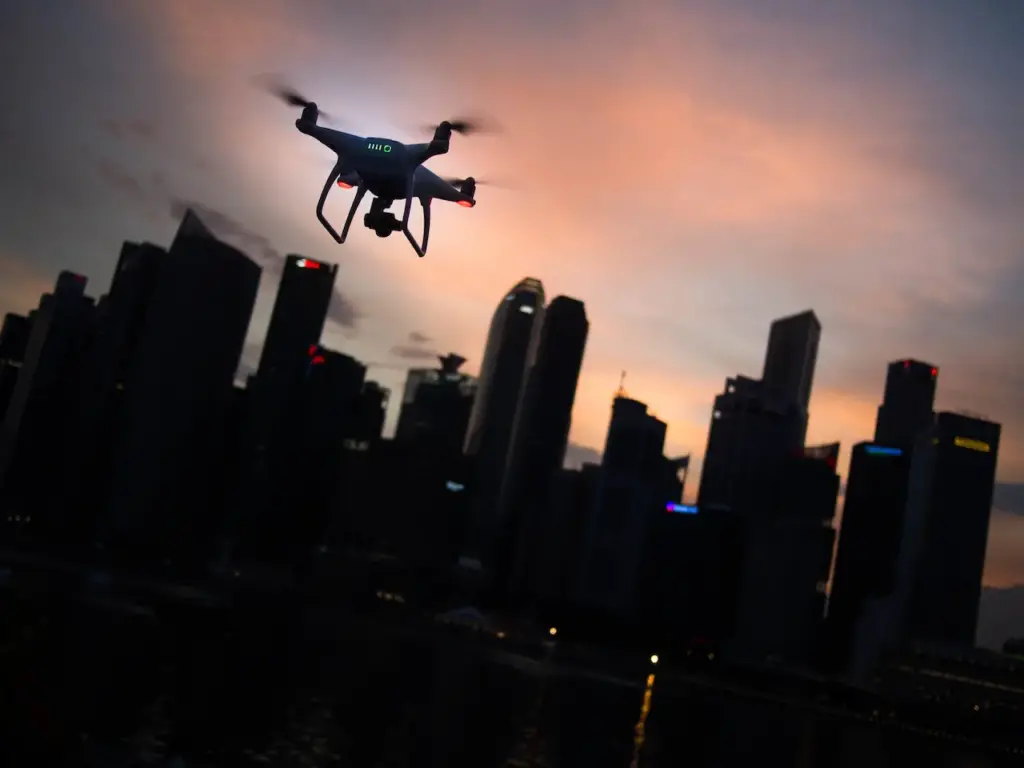
How to make sure you don’t lose a spot
Checklists should be proceduralized, just as pilots do during manned flight. These checklists can be written or memorized. They are similar to the GUMPS (gas, undercarriage mixture, prop and seatbelts) pre-landing check list in aviation.
Professional Drone Solutions always shoots a standard set of “Front Side, Side Back, Side Top Down” for every inspection. This is regardless of what the client says and the scope of inspection. This ensures that 80-90% of the roof is documented instantly, and at a reasonable level of resolution. Follow that list up with customized shots based on the scope desired.
A workflow is also important to show the photos in an organized way. It is unlikely that a client will make repeat purchases if they have to spend longer figuring out the location of a photo than it takes to take their own photos. Start further away and take a series of photos from far, medium and close. This will help clients to better understand what they’re looking at.
Roof inspection gear: the best equipment for roof inspections
Know your budget first before you decide what equipment to buy. Most drones today have an adequate sensor.
Drones such as the Mavic Enterprise 2 Dual are an affordable way to get into thermal inspections. But beware: there are many factors and complications to consider before you can produce a useful thermal deliverable.
Here is a list with specs that are non-negotiables, nice-to haves, and not necessary if you don’t want to spend a lot of time or money:
Non-Negotiable Specs:
- 20MP sensor
- Adjustable EV
- Low ISO (100 or less should be available).
- High Shutter speed (1/200 or faster should be available).
- Flight time 25+ minutes
Nice-to-Have Specs:
- Built-in storage (forgetting to bring an SD card on board no longer puts a pilot’s flight at risk)
- Large Sensor (1/2in and up)
- Global Shutter
- The size, shape, and color of the spheres are not obvious.
- Hand Launchable (great on construction sites)
Unnecessary Specifications:
- Before purchasing an expensive thermal sensing device, it is important to understand Thermography.
- Huge Drones – All they do is scare neighbors and hinder a pilot’s ability to navigate freely around obstacles.
- Zoom: A small, stable platform equipped with a sensor of 20mp+ will give a pilot all the details they need.
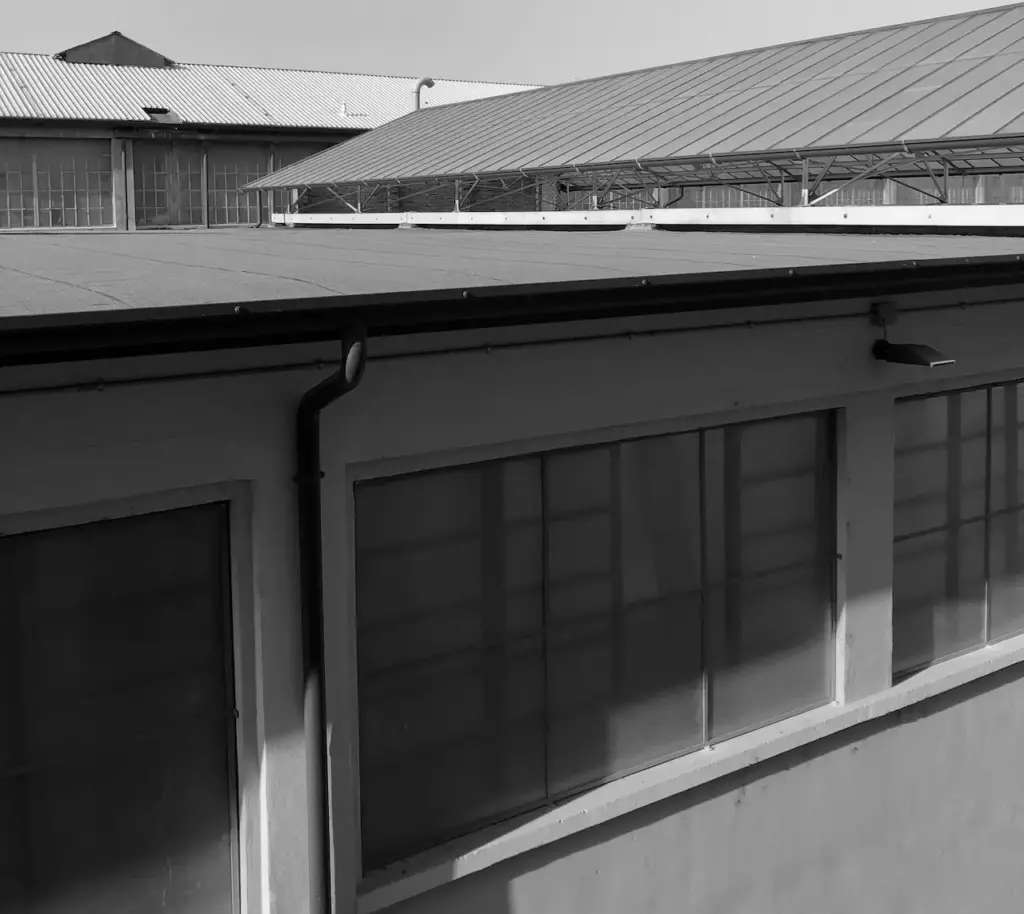
Drones are the perfect tool for roof inspection
Holy Stone 2-Axis Gimbal GPS Drone
If you are on a budget, the Holy Stone with 4K EIS Camera for Beginner Adults, HS720G Foldable FPV RC Quadcopter with Brushless Motor, 5G WiFi Transmission, Optical Flow, Follow Me, Smart Return Home.
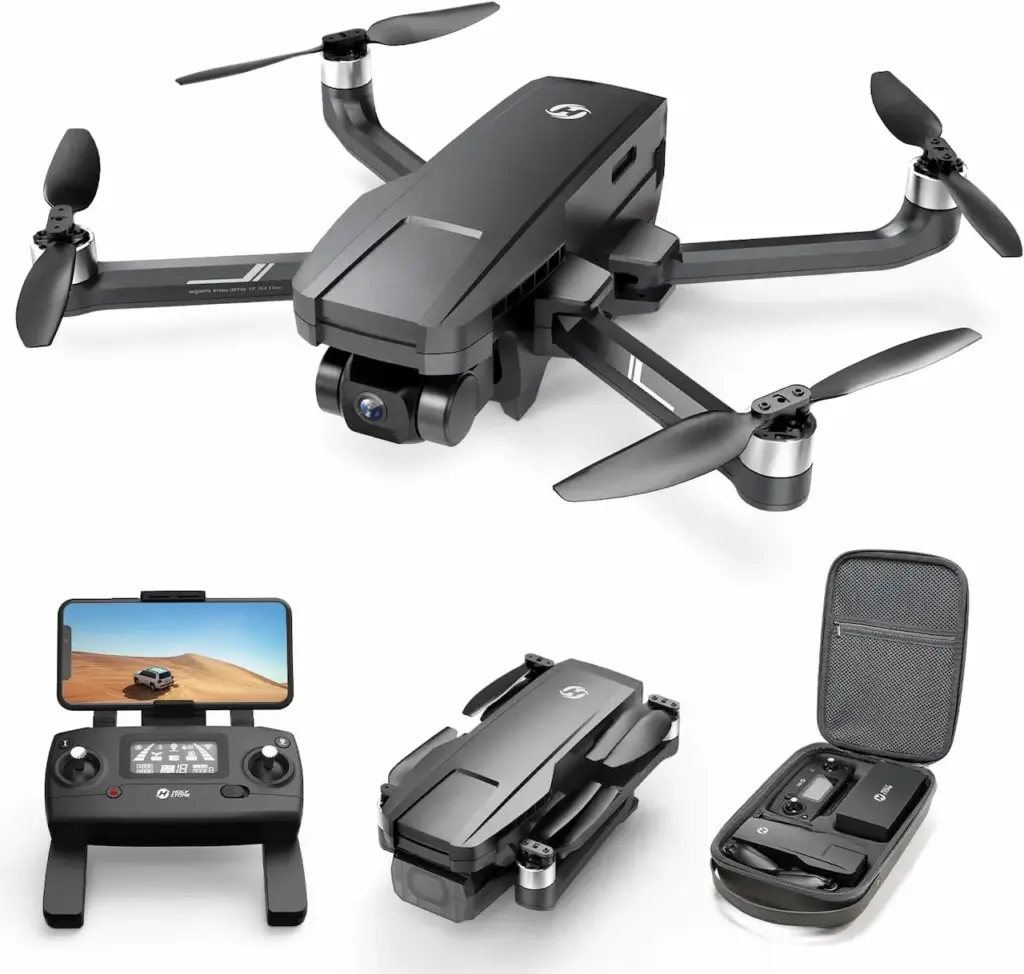
Lorem ipsum dolor sit amet, consectetur adipiscing elit. Ut elit tellus, luctus nec ullamcorper mattis, pulvinar dapibus leo.
| Brand | DJI |
| Model name | Mini 4 Pro |
| Special Features | Foldable, Lightweight with Integrated Camera |
| Age range (description). | Adults |
| Effective still resolution | 48 MP |
This item
- Operators will not need a drone pilot’s certificate if the drone weighs less than 249 grams. Flying drones is now easier and more fun.
- Enjoy Stunning Vertical Videos with 4K/60fps and HDR. The videos perfectly showcase sunrise, sunsets, and night scenes. Instantly share videos without post-cutting. Enjoy the best quality footage right out of your camera!
- Omnidirectional Obstacle Detection for Improved Safety: Fly with confidence knowing the drone can detect obstacles in all directions. Even first-time drone users can fly without worrying about collisions!
- Enjoy uninterrupted flights with extended battery life. Let go of battery anxiety and explore the vast landscapes.
- Immerse yourself in real-time aerial footage with 20km of FHD video transmission[2]- A must-have for long flights or high-quality visuals. Immerse yourself in aerial views that are real-time and uninterrupted with lag-free transmission.
- With ActiveTrack 360deg, you can easily customize intelligent tracking. Realize complex and seamless effects. You can capture smooth videos even if you are a novice.
- Includes RC2, three 45-minute flight time batteries, a charging hub, and a shoulder bag for increased flight time, fast, efficient charge, and convenient transport & storage. Three batteries with long endurance, so you can fly!
- Note: The applicable regulatory requirements can vary depending on the way you use your drone. Before flying, check the local laws and regulations to ensure your safety.
DJI Air 2S Fly More Combo
Drone with 3-Axis Gimbal Camera, 5.4K Video, 1-Inch CMOS Sensor, 4 Directions of Obstacle Sensing, 31-Min Flight Time, Max 12KM Video Transmission, MasterShots
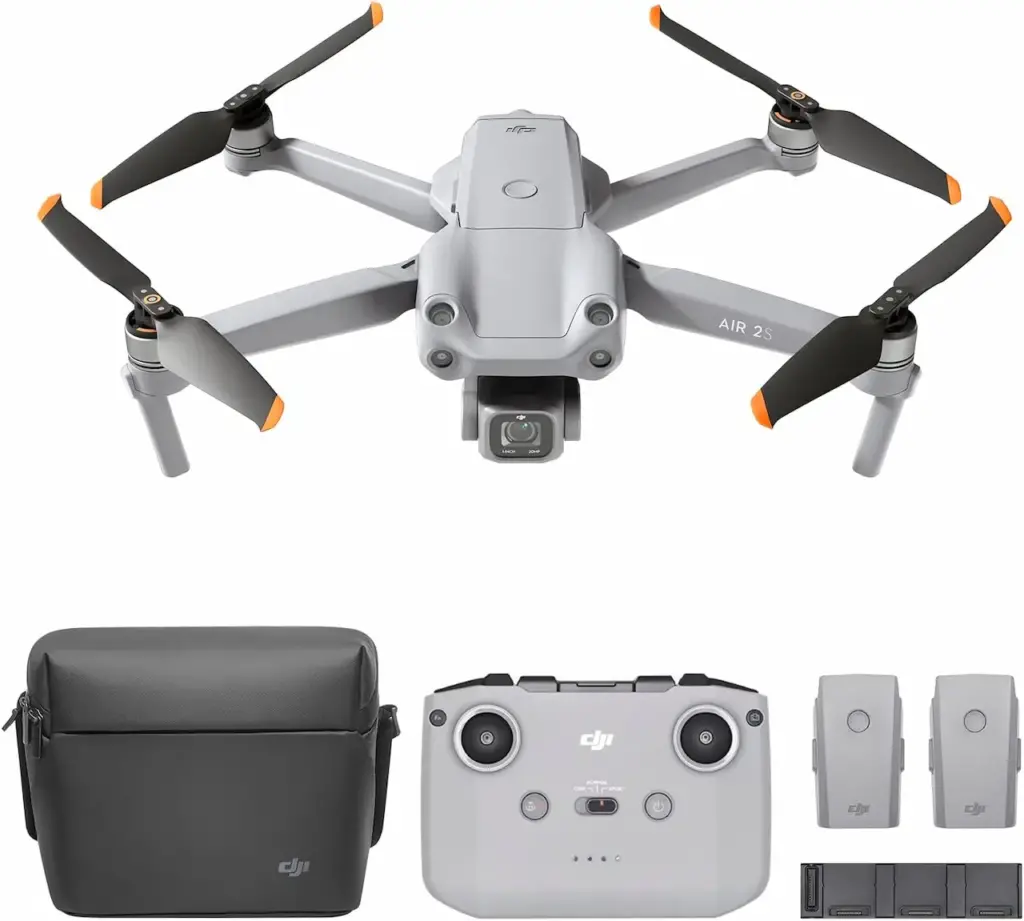
| Brand | DJI |
| Model name | Air 2S |
| Special Features | Compact, Lightweight Camera with Integrated Lens |
| Age range (description). | Adults |
| Colors | Grey |
The Drone:
- [(1-INCH SENSOR )] DJI Air 2S has a 1-inch sensor with large 2.4mm pixel size. It can shoot 5.4K/30fps or 4K/60fps videos.
- MasterShots are the next evolution of QuickShots. This intelligent feature gives users the best shot in any location by simply tapping.
- FocusTrack is a combination of ActiveTrack 4.0 and Point of Interest 2.0. This allows DJI Air 2S easily to circle or follow your subject.
- [(ONE BILLION COLORES)] The Dlog-M 10-bit color profile is capable of recording up to one billion colours while maintaining all the details that make footage stand out.
- The DJI Air 2S is equipped with the latest O3 (OcuSync 4.0) image transmission technology. This ensures a smooth, clear and reliable video feed each time you fly.
- [(ENVIRONMENT SENSENING)] DJI Air 2S can perceive its surroundings in four directions – up, down and forward and backward. This allows it to avoid obstacles even when in complex situations and at high speed.
DJI Mavic 3 Pro Fly More Combo
DJI Mavic 3 Pro Fly More Combo with DJI RC (screen remote controller), Flagship Triple-Camera Drone with 4/3 CMOS Hasselblad Camera, 15km Video Transmission, three Batteries, Charging Hub
| Brand | DJI |
| Model name | DJIMAV3PROFM |
| Special Features | Portable, lightweight, integrated camera |
| Age range (description). | Adults |
| Colors | Black |
The Drone
- Hasselblad Mavic 3 Pro Main Camera has a CMOS 4/3 sensor with f/2.8 to f/11 and 20 MP. Hasselblad’s 4K drone camera allows you to take RAW photos that have a dynamic range up to 12.8, stops.
- Medium Telecamera – Mavic 3 Pro camera has a 1/2-inch CMOS 166mm equivalent with 7x Optical zoom, 28x hybrid zoom, f/3.4 and 12 MP.
- Mavic 3 pro’s Omnidirectional Obstacle Sensor and APAS 5.0 ensures that you can fly and create safely. Eight vision sensors and a vision computing system work together to detect obstacles.
- The Mavic 3 Pro drone for adults has a maximum flight time of 43 minutes. This gives you the confidence to fly farther and less time worrying about battery levels.
- DJI O3+- Mavic 3 Pro has a maximum transmission distance of 15 km, with stable signals. It also features a 4K camera and a long-range drone that is suitable for adults.
- Smart Return to Home: With the new Advanced RTH System, Mavic 3, the camera drone, can return home on a safe, fast and optimized route. The quadcopter drone can be brought back to the pilot or activated when the battery is low.
- Included are three batteries, a charging hub to allow for more flight, and additional accessories. The DJI RC has a 4K camera and is ergonomic. Fly longer and capture more with the help of additional batteries.
- Immersive Flight Experience: Enjoy immersive flight with DJI Goggles 2, DJI Googles Integra and RC Motion 2! Fly with goggles, a motion controller and real-time camera for effortless control. Enjoy a thrilling FPV experience!
- Firmware Upgrade: The new Vision Assist offers visual assistance in four directions and improves aerial safety. The 70mm Medium Tele Camera supports 10 bit D-Log M and HLG color modes to expand post-processing.



